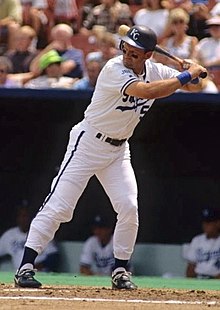Carl Hubbell
Carl Hubbell was a dominant pitcher back in the 1930's, with a bunch of incredible performances over the course of his career that made him one of the all-time greats.
He reached the Major Leagues in 1928 at age 25 with the New York Giants after several seasons in the Tigers farm system. He improved steadily over his first few seasons, becoming the best pitcher in the league by 1931,when he had a 2.65 ERA and led the league in WHIP, a category he would lead the league in 6 times over the next 8 seasons.
He had his best season in 1933, when he led the league with 23 wins, a 1.66 ERA, and 10 shutouts. During that season, he pitched an 18-inning shutout against the Cardinals, and it was a perfect game through 12 innings. He won the MVP that season, then put on an amazing performance in the World Series, pitching 20 innings without giving up a single run, while amassing 15 strikeouts and winning the championship.
In 1934, he put on a show in the All-Star game, setting a record by striking out 5 consecutive batters, still the record for a single pitcher, and those 5 were Babe Ruth, Lou Gehrig, Jimmie Foxx, Al Simmons, and Al Cronin. He ended that season leading the league in ERA, saves, and complete games.
In 1936 he became the first unanimous MVP in league history after winning 16 consecutive games to end the season, a streak he would extend to a league-record 24 games the next season. He pitched very well in the World Series again that year, giving up only 4 runs in 2 starts while striking out 10, but they Giants were unable to beat the Yankees.
He was the league leader in wins again in 1937, and also had the most strikeouts for the first time. He hung on for 6 more seasons, but eventually wasn't contributing, so he retired and went to work for the team, first as director of player development, and later as a scout, and he remained working for the Giants for the remainder of his life.
Hubbell was the first NL player ever to have his number retired, and was the first ever unanimous MVP. He dominated his first World Series, and played incredibly well in his second appearance. He still hold the All-Star game record for consecutive strikeouts, and the league record for consecutive wins, and needs to be remembered as one of the greatest to ever play the game.


















